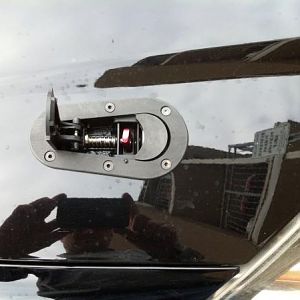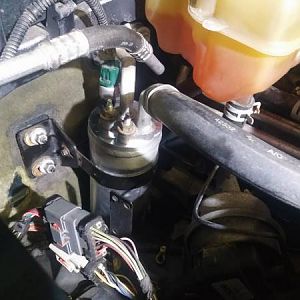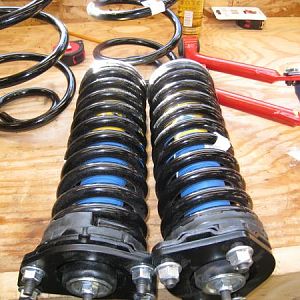jfortier777 said:
All cables have those same issues. I cant say with certainty but I believe the high level inputs go through a series of filters and reductions before actually being amplified. The amplifier manufacturers know these things and design the amp for as good as possible performance with the limited connectivity.
But why have that limited connectivity? That's like when somebody spends $2000 on a car stereo and then pumps their iPod in through a staticy FM transmitter. Just because it works doesn't mean it's ideal. Why would anybody intentionally use a less capable cable when decent audio cables are cheap enough? I think even the factory speaker wiring is at least 18 gauge.
Because points of connection are the main place that signal quality is lost, it makes sense to coat it with the best material you can. Also the connections on the phone line are probably also plated at the terminals.
Ok, so if the point of connection is the issue, why would you go from a coaxial connector with a ground-shield to a modular connector like on a phone cord? Or is it going to be using a different connector? If it's going to be using a different connector, why not just use a cable that has the right connector to begin with? I'm not doubting that a phone cable would technically work, you could probably twist some alumnimum foil up and make it work, I'm just saying that a modular phone cable is not the right cable for the job, and you'd get better quality by using the right cable. And if we assume that the connection is as good between the two, there's an awful lot of transmisison line theory that says the cable used makes a difference (coax or twinax vs twisted pair)
You are mistaken. An average phone line in a house runs at 48V DC. Considering that everything else in your vehicle is running at 12V I think the term high voltage could be used. (though really high voltage is like 600V+, that means that the 110 wall socket in your house is low voltage too, so be sure not to mix taht up and consider things that are low voltage to be weak.)
48V, yes, but very low power. I said low-voltage low-power to mean both current and voltage.
The other part of that question you have mixed up is voltage vs wire size.
Voltage is not the reason we have wires in different gauges. Current is the factor that determines this. I dont want to type out a electronics 101 course here so heres a very brief explanation.
No need for EE 101, I'm an electrical engineer. I was saying that high-voltage does not mean smaller cable, that's only true when you assume that you have the same power (V=IR). Just because you have a higher voltage in this case doesn't mean you have lower current - in fact, it's actually MORE current than you would have in a pre-amp output.
It is because of these rules that things like tasers can exist. If what you were thinking was correct than a pocket size taser with 50,000 volts would have cables bigger than your arms attached to it. So because speakers in your car run at higher voltage than the normal RCA signal wires, the tapped wires for the input do not need to be nearly as large.
I didn't say that large voltage means large wire, I was just disagreeing with what you said about a high voltage allowing for a smaller wire. (which is why I specified low-power in addition to low-voltage). If you have a specified amount of power, then yes, when you lower the voltage, you increase the current and when you raise the voltage you decrease the current, but just because the voltage is higher does not mean that the power is constant.
And No No No, the reason the RCA wires are a lower voltage is because there is LESS power there. Actually, almost NO power compared to the speaker outputs. The pre-amp output is intentionally unamplified and has a lot less power than the (amplified) speaker outs.
Another reason to not use a phone cable for carrying audio like that is loss - a thinner cable will have a higher resistance and more loss. You may think that it shouldn't matter since you are going to amplify anyway, but loss is never linear, so you are losing some quality by using a thin little wire instead of something more substantial.
 / ). I am going to splice the speaker wires in the rear driver side door. How do I get the panel off? Any diagrams? Thanks guys! I'm ready for the BOOM BOOM \
/ ). I am going to splice the speaker wires in the rear driver side door. How do I get the panel off? Any diagrams? Thanks guys! I'm ready for the BOOM BOOM \ / \
/ \ / \
/ \ / \
/ \ / \
/ \ / (can you tell I'm excited?!) OH- THERE WILL BE PICS OF INSTALL
/ (can you tell I'm excited?!) OH- THERE WILL BE PICS OF INSTALL









